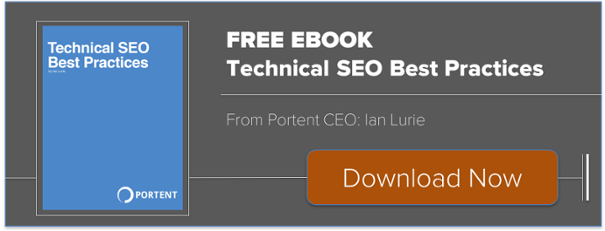Rich snippets, rich cards, knowledge graphs and panels, schema.org, JSON-LD, featured snippets, featured features, Richie Rich, KEVIN BACON!
Wait, that was more than six degrees…
There’s a lot of terminology out there about the different ways search engines, Google in particular, display their search results. Two of the most oft confused are the snippets, both rich and featured.
So, what’s the difference between a rich snippet and a featured snippet?
Simply, a rich snippet is an enhanced organic search result and a featured snippet is an answer to a query that appears above the organic search results in position zero.
Where do Snippets Come From?
Well, when a search engine loves your structured data very much…
Over many years, the algorithms of the major search engines have been constantly improving their ability recognize and understand the content of your… content…
But, when you use structured data to markup the content on your site, you are helping the machines to better understand exactly what is on the page so that information can be displayed in search results. With structured data, you can proactively specify your content and information so that you don’t have to rely on an AI’s interpretation of the info your site offers. By taking the time to make these tweaks in the HTML, you can take your search results from
What’s the Difference Between a Rich Snippet and a Featured Snippet?
Ordinary search result
to
What’s the Difference Between a Rich Snippet and a Featured Snippet?
Awesome search result
To be clear, structured data markup and managing to generate a rich snippet isn’t going to vault your site to the top of the SERPs. They will however, encourage more clicks into your site by providing more useful information to searchers within a results page.
In the super competitive local SEO game, there are big-time benefits from structured data markup, as well as in e-commerce, or really anyone with specific products to sell.
As far as difficulty: rich snippets are the easier of the two to acquire. Just mark up all your important data in the HTML, wait, and hope.
Featured snippets are far more elusive
First, if you want to get to that hallowed ground that is position zero, you are going to need to answer the searcher’s question with quality that exceeds the pack. Featured snippets are designed to surface the best answer to a question above all other organic results and are taken directly from a web page, along with a link to the referring page, the original page title, and the URL.
Thanks to the good folks over at STAT, we know a lot about the nature of featured snippets. Honestly, everything you need to know starts here: https://getstat.com/blog/featured-snippets/
Some things you should keep in mind while you’re chasing after featured snippets:
Featured snippets often show up for some of the most competitive queries. If your best page for the topic or question isn’t already on the first page of the major search engines, don’t get your hopes up for position zero.
Headings are important! Use the H1 to pose the question you’re answering on the page. Then for example, use H2s for potential People Also Ask questions throughout. What better way to show your relevance for a query than to answer more related questions?
Featured snippets appear in three different forms (paragraphs, lists, and tables) depending on the question and the formatting of the answer. So, make sure you cover the basics and format tables as table and your lists as ol or ul. Search engines can digest and reformat your content to answer the question so, not every featured snippet will use this formatting. But, these basic HTML tags are a best practice so why not?
Paragraph Featured Snippet
List Featured Snippet
Table Featured Snippet
As we SEOs chase down the latest shiny-thing-on-the-end-of-a-stick that is featured snippets, try to remember that without good and useful content, none of this matters. Write and create content for people first and you will generally be rewarded.










